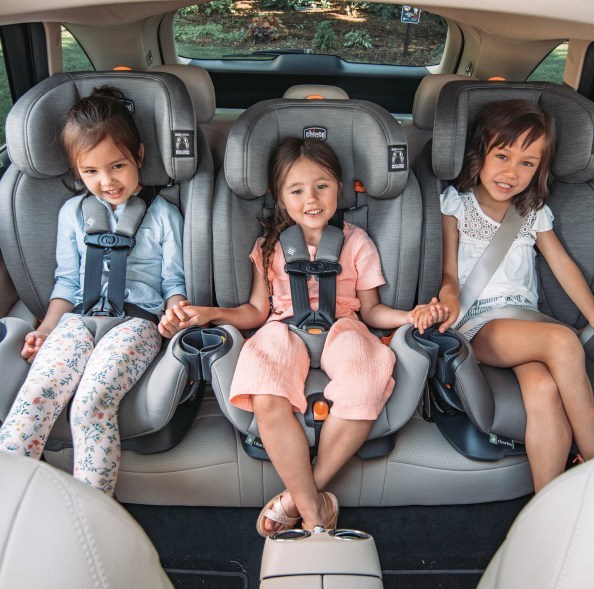A concerning lack of proper child restraint use among children injured or killed in car crashes still exists, according to new analysis from AAA.
Five years of crash data from the U.S. Department of Transportation, analyzed by AAA revealed that nearly half (48 percent) of children aged 10 and under who were injured and half (51 percent) who were killed in car crashes were either using a vehicle seatbelt prematurely or no restraint instead of a car seat.
According to the study released by AAA and Chicco USA, a maker of car seats, between 2017-2021 more than 3.9 million children ages 10 and younger were involved in crashes while riding in a vehicle, 527,000 were injured and 2,789 were killed.
Chicco USA and AAA are collaborating this month to spotlight the importance of effective car seat use, sharing tips and resources for parents to keep their children safe while on the road.
“AAA’s in-depth analysis of crash data has brought to light safety issues that concern us, and we’re in a position to help by sharing our expert resources about car seat safety use factors such as proper seat installation, type of seat and mode of use at each stage of child growth,” said William Hasse, vice president of Marketing, Chicco USA.
When used properly, infant seats, boosters and seatbelts will effectively protect young passengers.
According to the U.S. Department of Transportation, child restraints reduce fatalities by 71 percent for infants younger than 1 year old and by 54 percent for children 1 to 4 years old in passenger cars.
According to AAA’s analysis, the latest data from the U.S. DOT reflects a need for parents to ensure they are using the correct child restraint system for each phase of growth.
According to Child Passenger Safety Technician at Chicco, Josh Dilts, it’s important not to skip the booster phase.
The data decreased by more than half in car seat use from age 7 to age 8, an age that saw significant injuries reported. Many parents may not know that seatbelt fit is more about their child’s height than age (many state laws focus on age only).
Based on their size, children upwards of 10 years old may benefit from using a booster seat, he said.
Most booster seats accommodate children up to a height of 57 inches.
Children should always use a restraint when riding in vehicles, he added.
Shifting from a car seat to a vehicle seatbelt too early isn’t the only issue, as nearly four in ten (38 percent) of children aged 7-10 killed in a car crash were completely unrestrained and, of the youngest children (aged 0-3), nearly one in four (24 percent) who were killed were unrestrained.
Dilts indicated that the use of no restraints, which is defined by this dataset as not using a child car seat, booster seat, seatbelt nor strapped into the vehicle in any manner, is alarming.
“Parents should be diligent in ensuring their child is properly restrained in the car before it is in motion, especially if the child is not old enough to secure themselves,” he said.
Dilts also recommended using available resources.
Chicco and other car seat manufacturers will typically provide the latest car seat guidelines and installation tutorials.
Local fire departments often have a Child Passenger Safety Technician on hand who can check if a car seat is installed correctly.





















 10,000 Travelers Employees Get AI Assistants via Anthropic Partnership
10,000 Travelers Employees Get AI Assistants via Anthropic Partnership  U.S. High Court Rejects $2.46B Boy Scouts Sex Abuse Settlement Challenge
U.S. High Court Rejects $2.46B Boy Scouts Sex Abuse Settlement Challenge  AI Is the Biggest Mover on Allianz Risk Barometer; Cyber Takes Top Spot for Fifth Year
AI Is the Biggest Mover on Allianz Risk Barometer; Cyber Takes Top Spot for Fifth Year  First Atlantic Hurricane Forecast for 2026 Suggests Season Close to 30-Year Norm
First Atlantic Hurricane Forecast for 2026 Suggests Season Close to 30-Year Norm 



